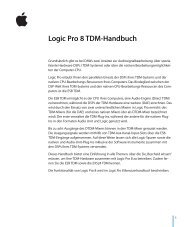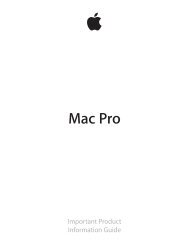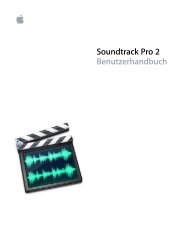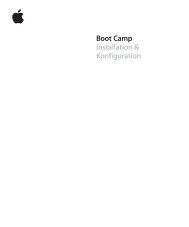iPhone User Guide - Support - Apple
iPhone User Guide - Support - Apple
iPhone User Guide - Support - Apple
You also want an ePaper? Increase the reach of your titles
YUMPU automatically turns print PDFs into web optimized ePapers that Google loves.
Hearing aid compatibility<br />
The FCC has adopted hearing aid compatibility (HAC) rules for digital wireless phones. These<br />
rules require certain phones to be tested and rated under the American National Standard<br />
Institute (ANSI) C63.19-2007 hearing aid compatibility standards.<br />
The ANSI standard for hearing aid compatibility contains two types of ratings:<br />
••<br />
An “M” rating for reduced radio frequency interference to enable acoustic coupling with<br />
hearing aids that are not operating in telecoil mode<br />
••<br />
A “T” rating for inductive coupling with hearing aids operating in telecoil mode<br />
These ratings are given on a scale from one to four, where four is the most compatible. A phone<br />
is considered hearing aid compatible under FCC rules if it is rated M3 or M4 for acoustic coupling<br />
and T3 or T4 for inductive coupling.<br />
For <strong>iPhone</strong> hearing aid compatibility ratings, see www.apple.com/support/hac.<br />
Hearing aid compatibility ratings don’t guarantee that a particular hearing aid works with a<br />
particular phone. Some hearing aids may work well with phones that don’t meet particular<br />
ratings. To ensure interoperability between a hearing aid and a phone, try using them together<br />
before purchase.<br />
This phone has been tested and rated for use with hearing aids for some of the wireless<br />
technologies it uses. However, there may be some newer wireless technologies used in this<br />
phone that have not been tested yet for use with hearing aids. It is important to try the different<br />
features of this phone thoroughly and in different locations, using your hearing aid or cochlear<br />
implant, to determine if you hear any interfering noise. Consult your service provider or <strong>Apple</strong><br />
for information on hearing aid compatibility. If you have questions about return or exchange<br />
policies, consult your service provider or phone retailer.<br />
Subtitles and closed captions<br />
The Videos app includes an Alternate Track button , which you can tap to choose subtitles and<br />
captions offered by the video you’re watching. Standard subtitles and captions are usually listed,<br />
but if you prefer special accessible captions, such as subtitles for the deaf and hard of hearing<br />
(SDH), you can set <strong>iPhone</strong> to list them instead when they’re available.<br />
Prefer accessible subtitles and closed captions for the hard of hearing in the list of available<br />
subtitles and captions. Turn on Settings > General > Accessibility > Subtitles & Captioning ><br />
Closed Captions + SDH. This also turns on subtitles and captions in the Videos app.<br />
Choose from available subtitles and captions. Tap while watching a video in Videos.<br />
Customize your subtitles and captions. Go to Settings > General > Accessibility > Subtitles &<br />
Captioning > Style, where you can choose an existing caption style or create a new style based<br />
on your choice of:<br />
••<br />
Font, size, and color<br />
••<br />
Background color and opacity<br />
••<br />
Text opacity, edge style, and highlight<br />
Not all videos include closed captions.<br />
Appendix A Accessibility 136
















